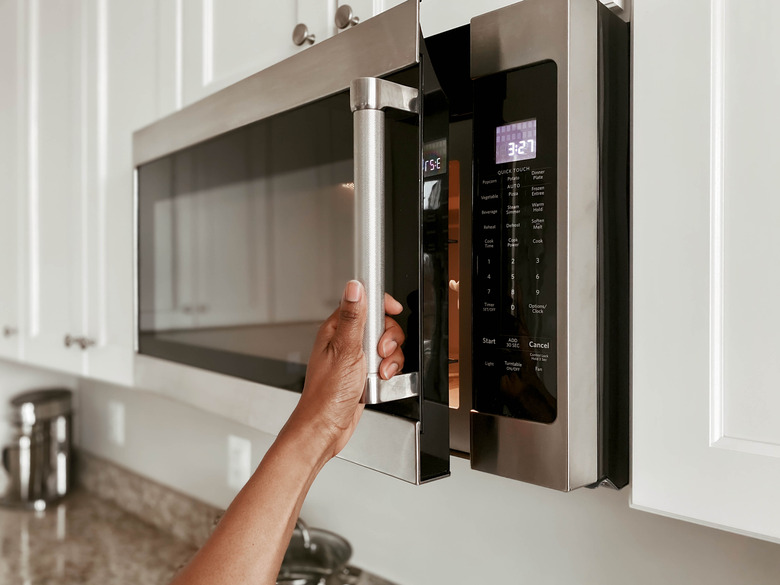What Causes The Inside Of A Microwave To Crack?
We may receive a commission on purchases made from links.
Its hulking mass is prevalent in kitchens across the world, and in many garages as well. The microwave oven is a sturdy, helpful cooking appliance that is often taken for granted for its powerful components, but few people are willing to live without one. If a crack has formed on the inside or outside casing of a microwave that is in regular use, it's fair to wonder if it's actually safe to continue warming up your quesadillas or your morning cup of brew.
Tip
The inside of a microwave oven can crack when you use items that contain metal or that are otherwise not microwave safe.
Microwave Myths Debunked
Microwave Myths Debunked
It's long been thought that a microwave oven, particularly if not used properly or with great care, can cause cancer. Actually, microwaves use radiofrequency radiation. Although it sounds like a mouthful, it's nothing to be alarmed about since it's the same radiation that floats around you in everyday life from the sun and other natural sources.
While the radiation produced by a microwave oven is more concentrated, it is safely contained within the housing, even if you pop open the door before the timer ends. If radiation should ever leak out due to serious damage to the oven or alteration by the user, the most damage it would do would leave a burn on your skin. That is less of a burn than steam from a teapot. It's also OK to stand in front of the glass oven door. Just don't press your nose against it.
Causes of Cracks
Causes of Cracks
The trusty microwave oven is one of the more heavily used appliances in the kitchen, behind the daily opening and closing of the refrigerator and freezer. It's often also mistreated due to the frustration of the user or the lack of cleanliness practiced by multiple users.
When a metal utensil, bowl, or wrapper is put in the microwave, it can cause cracks in the bottom of the microwave oven. Some ceramic dishes may actually contain metal or other material that is not conducive to microwave cooking. Make sure to read whether or not the item being placed in the oven is microwave-safe.
If the door is slammed and a crack begins to spread, the microwave should not be used until the door is safely replaced. Microwaves can leak out in small proportion, but there is a potential for a burn to occur on the user. A specially designed sealant can repair minor cracks inside the microwave oven without posing any health or fire risks.
Safe Cracks Can Happen
Safe Cracks Can Happen
If you find that the housing is slightly cracked on the vent or door handle, you don't need to worry because it shouldn't affect the use of the microwave in any way. If the spinning plate cracks, the microwave itself isn't truly affected, but if you continue to use the microwave without the spinning plate you run the risk of cracking the interior. The spinning plate helps to disperse the heat rather than have it concentrated in one area. This can lead to a hot spot that can cause serious issues when the microwave is in use.
